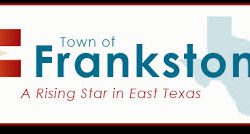 A new addition is coming to the pages of ETX Bell, and it’s not just ink—it’s innovation.
A new addition is coming to the pages of ETX Bell, and it’s not just ink—it’s innovation.
Starting with the Founders Edition, readers will notice small black-and-white squares throughout the newspaper. These are QR codes—short for Quick Response—and while they may look like a tech gimmick, their purpose is anything but impersonal. They’re here to make your reading experience better, deeper and more dynamic.
QR codes were first developed in 1994 by Japanese engineer Masahiro Hara and his team at Denso Wave to track car parts in Toyota factories. The technology allowed for faster scanning and could store significantly more information than a traditional barcode. Though initially limited to manufacturing, QR codes have become a powerful tool across industries, particularly with the rise of smartphones. Today, more than 85% of Americans own a smartphone, and scanning a QR code is as simple as pointing your camera at it.
For ETX Bell, the inclusion of QR codes isn’t about chasing trends—it’s about building bridges between print and digital media in a way that adds real value to the reader.
“Newspapers have always been about connecting people to their community,” said publisher Joshua Larson. “QR codes are just another way we’re doing that—bringing video, galleries, and extended stories straight to our readers without losing the feel and trust of a printed paper.”
Scan a code next to a feature article, and you might be taken to a short video interview with a local official. Reading a story about an event? A QR code could unlock dozens of additional photos that didn’t fit on the page. Want to learn more about a business or topic? A code might link to further coverage or background material on etxbell.com.
For longtime newspaper readers, the shift might feel unfamiliar at first. But the core experience hasn’t changed—only expanded. Everything on the printed page still stands on its own. The QR codes simply offer more to those who want it.
Younger readers, especially digital natives, are already accustomed to interactive content. For them, QR codes offer a reason to engage with a physical newspaper. Meanwhile, older readers benefit from optional extras that deepen their understanding without replacing traditional journalism.
“This isn’t about replacing what people love about newspapers,” said Larson. “It’s about enhancing it. We want kids, teens, parents, and grandparents to all find something to enjoy and something to gain.”
The codes can be scanned with any smartphone camera. No app is required for most modern devices, and for those unsure how to use them, the newspaper’s website will feature a simple tutorial at etxbell.com.
More than just a technical upgrade, the use of QR codes represents ETX Bell’s commitment to serving a wide audience with stories that resonate across generations—while offering access to more when it’s wanted.
“From a high school concert video to a deep dive into local history, there’s more room for storytelling than ever before,” Larson said. “We’re not just printing the news—we’re bringing it to life.”
For readers looking to get the most out of their community newspaper, the message is simple: give the QR codes a try. The box might be small, but the experience behind it is bigger than ever.


